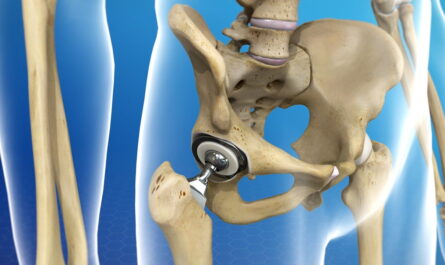
Symptoms of Lyme Disease
The early symptoms of Lyme disease typically appear 3-30 days after a bite from an infected deer tick. These symptoms may include fever, chills, headache, fatigue, muscle and joint aches, and swollen lymph nodes. A circular rash known as erythema migrans or EM rash often appears at the site of the tick bite within a few days or weeks after being bitten and in around 70-80% of infected persons. This rash can expand gradually over a few days reaching up to 12 inches across. Other than the rash, these early symptoms are often mild and flu-like, making diagnosis difficult without a reported tick bite. If untreated, later stages of Lyme disease can develop involving the joints, heart, or nervous system.
Laboratory Testing Challenges
While laboratory testing plays an important role in diagnosing Lyme disease, it presents unique challenges. Lyme disease bacteria Borrelia burgdorferi produce proteins that allow them to evade the immune system making it difficult for the body to produce antibodies in sufficient levels detectable by current diagnostic tests. The immune response develops gradually over time with some patients not showing a positive test until several weeks after the initial infection. Other Lyme disease causing Borrelia species may be present that cross-react poorly or not at all with current test antigens. Co-infections from other tick-borne pathogens can also complicate interpretation of test results.
Two-tiered Testing Approach
Clinical labs in the United States typically follow a two-tiered testing approach recommended by the Centers for Disease Control and Prevention (CDC) for diagnosing Lyme disease. The first tier is an enzyme immunoassay (EIA) or immunofluorescent assay (IFA) test screening for antibodies to B. burgdorferi. If positive or equivocal, a second more specific test called the Western blot is performed to help confirm exposure. While useful, these antibody-based tests remain dependent on an adequate antibody response, proper timing of specimen collection, and strain variability in the laboratory tests.
Challenges in Interpreting Western Blot Results
The criteria used for interpreting Western blot results have been controversial with experts disagreeing on the appropriate criteria cutoffs. In particular, the importance of individual bands reacted on the Western blot has been debated. The CDC criteria is more stringent requiring a certain number of bands for a positive interpretation versus broader criteria by labs and expert reviews panels. Several studies have found the two-tiered approach lacking sensitivity, especially early in infection prior to antibody development or in cases of chronic or disseminated Lyme disease. Discordant results where clinical signs match Lyme but tests are falsely negative can occur in up to 30% of cases according to some studies.
Improving Sensitivity with Newer Diagnostic Tests
Various research studies have explored alternative diagnostic approaches and newer tests aimed at improving sensitivity, especially early in infection. Tests utilizing gene amplification techniques like polymerase chain reaction (PCR) on blood or tissues samples hold promise for direct detection of B. burgdorferi DNA during early localized infection before antibody production. Studies have found CSF PCR to be more sensitive than serum in neurologic Lyme disease. newer antibody tests detecting IgM responses to recombinant peptides have shown higher sensitivity than 2-tier approach. Additionally, tests detecting immune markers other than antibodies like CD57 lymphocyte counts are being explored. While promising, these tests require more validation before being adopted as standard diagnostic tools in clinical practice.
Integrating Clinical Assessment with Testing
Given the limitations of current diagnostic tests, fully evaluating for possible Lyme disease requires clinical judgment along with testing. A careful exposure history and assessment of compatible symptoms should guide appropriate testing and interpretations. In situations with high pre-test probability based on exposure and signs, physicians may opt for empiric treatment even with equivocal or negative test results especially early in infection. Ongoing studies aim to better define clinical criteria that can help support diagnoses where testing remains challenging. Integrating thorough patient evaluations with pragmatic use of imperfect tests remains key to optimizing Lyme disease diagnosis and management.
Conclusion
In summary, Lyme disease presents unique challenges for laboratory diagnosis due to the complex biology of the causative bacteria and variability in human immune responses. While two-tiered testing provides a standardized approach, it has limitations particularly early in infection. Research continues toward improving serological tests and exploring complementary diagnostic tools. In the meantime, clinical assessment factors heavily into diagnosis when test interpretation proves difficult. Adopting a careful and pragmatic approach combining patient history, symptom evaluation and diagnostic testing remains most effective for accurately identifying this treatable but complex tick-borne illness


